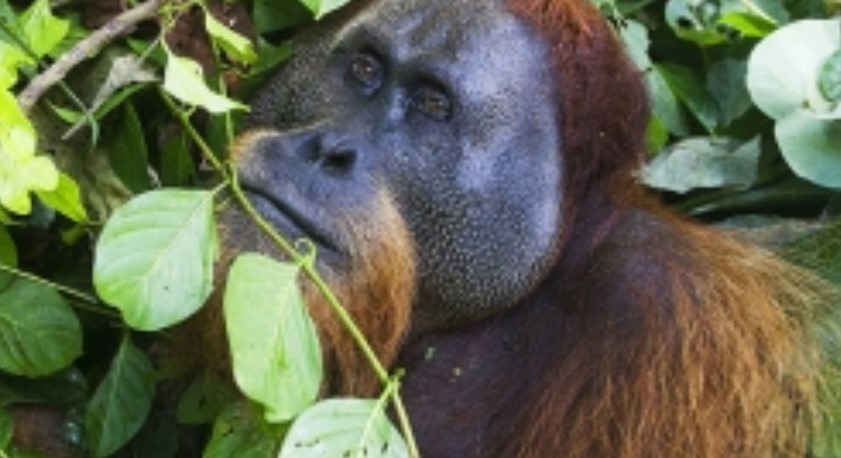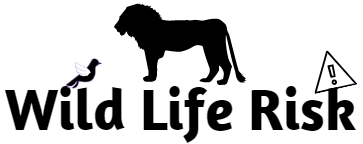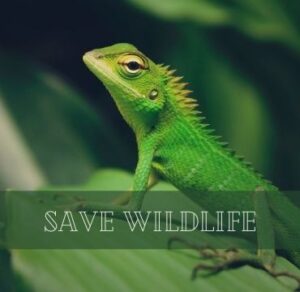Is the Shadows of Sumatran Orangutans (Continue)

Death by a thousand cuts
It’s now or never for those trying to save the critically endangered Sumatran orang-utan, as the last of its natural habitats come under threat from the chainsaw. Words and pictures by Paul Hilton
Imagine you’re stuck inside your home and the only food you have is what’s left in the fridge. Outside is a wasteland as far as the eye can see. Would you sit around and wait to starve? Or would you make a run for it, into the unknown? Most humans would probably make a run for it. But not a full-grown male orangutan, aptly named Avatar.

One of the last remaining 6,600 critically endangered Sumatran orangutans, his home forest means everything to him – what is left of it. Now only about the size of a football field, one side is still burning while the remainder is a monoculture of palm oil trees. In the far distance are the remnants of this once mighty tropical forest – now charred tree stumps and smoke as far as the eye can see.

On the ground, a team from the Sumatran Orangutan Conservation Program (SOCP) prepares tranquilizing darts and moves into the small patch of forest for the second time this month. Avatar needs to be relocated; even his tiny patch of forest will be gone within weeks and replanted with the new cash crop, palm oil.

Once the team sees him, they line up a customized air gun and a dart flies through the trees and hits Avatar. He immediately starts making a kissing sound, clearly in distress. Moving through the trees with speed, he swings from one branch to the next, pausing momentarily before calculating his next move. Clearly the dart has not worked.

At that moment, the rain starts to move in. The team takes cover under the canopy, waiting for it to pass. Mosquitoes buzz around their heads as leeches wait on every blade of grass, swinging from side to side, waiting for their next meal of blood.

The rain passes and the team re-groups, moving forward and forcing Avatar into a small section of the forest. This time, team veterinarian Yenny Saraswati shoots and the dart hits Avatar right in the thigh – a perfect hit.

As the tranquilizer drug starts to kick in, the team places a large net around the base of the tree. Avatar’s hands start to slip, then his legs, as his immense body suddenly comes crashing down. He bounces off a branch and falls to the ground, missing the net completely. Luckily, leaf litter and ferns on the ground cushion his fall. Surprisingly, Avatar lifts his massive orange head above the ferns and looks at everyone with an intense stare.

The critically endangered Sumatran orangutan is losing habitat fast. Pristine forest in Indonesia is being felled, burned, drained and cleared into palm oil plantations at a shocking pace. The three remaining coastal peat swamp forests of Aceh province – Tripa, Kluet and Singkil – are among the most precious natural habitats in the world. Home to almost a a third of Sumatra’s last remaining orangutans, forest hunting, poaching, human-wildlife conflict, illegal logging and fires have decimated more than 80 per cent of Tripa’s original orangutan population.

These coastal forests form vital corridors linking the Indian Ocean with the rainforests of the Leuser Ecosystem and the Gunung Leuser National Park. A critical carbon storehouse for the planet, Tripa has already been 70 per cent cleared for palm oil plantations. Irrigation canals are depriving the former swamp forest of the very life that supports it, as the water table drops.

Local communities are suffering too, as vital wells dry up. Wells that stayed full for weeks now only last a few days.

The SOCP team moves in quietly to pin down Avatar and give him another shot to knock him out completely. They’re reminded of a quote from Dr Ian Singelton, who heads the program: “You never want one of these animals to get a grip on you in these situations – it could rip your arms out of its sockets in a heart-beat. Try to imagine a four-legged octopus with the strength of six men getting hold of you. It’s not pretty. People seem to think it’s OK to relocate orangutans, but it’s very dangerous for both sides, broken bones are fairly common during such rescues.”

Avatar is rolled over and pulled on to a makeshift bamboo stretcher. “He’s so under weight,” says Yenny. “An ape of this size should weigh about 100kg, but he seems to be only 60kg. He’s got nothing to eat apart from tree bark or the young palm oil seedlings planted around here. He has no other choice, all the original fruit trees have been lost to the palm oil plantations.”

Avatar is marched out of the small patch of forest, past the oil palms, and placed in transport cage on the back of pick-up. He has just started his six-hour journey to Jantho, the release site.
A few days later, the SOCP team receives a tip-off that a young orangutan is being kept as a pet in a local village close to the edge of Tripa forest. They decide to go in. In these situations, they need to proceed with caution, as the area was a known rebel strong hold for Gerakan Aceh Merdeka(GAM), the separatist rebel group during the Aceh civil war from 1976-2005.

Heading to the local police station for back-up, there will be no arrests for keeping an endangered species – only a just a warning. The Chief of Police invites the team to his office, and at one point struggles to understand what an orangutan is. He hesitates at first, saying the area has a reputation as being lawless. After handing him some promotional material on the Sumatran Orangutan and the work of the SOCP he comes around, and escorts the team to the small village the following day.

On arrival, the team sees the young male juvenile orangutan tied up in front of a house. He appears to be in good condition, but after talking to the villagers – most of them plantation workers – the team discovers the orangutan’s mother was killed when he was captured.

Negotiations go on for some time, and at times get quite heated, as clearly the family loves the young orangutan like a family member. It seems the whole village comes out to see what’s going on. Several hours pass, and the SOCP team finally leaves with the orangutan.

Once at the quarantine center outside Medan, they name him Rahul. The young ape is subjected to a full health check and for evidence of any injury or illness and placed in a holding cage, where he must pass a minimum 30 day quarantine period before being introduced and socialized with other orangutans his own age and after that, eventually released back into the wild.


A month later in Tripa, a wildlife investigation team – posing as buyers – during a stop to buy some drinks and chocolate – tracks down another young orangutan being kept illegally. This time the owners want to sell. The team is taken to a house and asked to wait. Some 15 minutes later, a man on a motorbike turns up and asks them to follow him down the narrow back streets until they finally arrive at the location.

Entering a dark room full of people, the orangutan is brought out and placed on the floor. It is the sickest looking orangutan the team has seen in a long time; underweight, afraid of people and holding a small handful of rice. Clearly he had been teased and taunted by his “owners” and shuns human contact. The ape has a small leather collar around his neck and patches of hair are missing from sleeping on cold hard surfaces.

The traders talk openly, going into detail of how they catch orangutans. “We identify the mothers with babies, then cut down the trees around them, leaving them with nowhere to run. Then we climb the tree and beat the mother close to death until she falls, using meter-long bamboo sticks. Only when she is unconscious are we able to prise the infant from her grasp. We can normally sell one for about one million to two million rupiah, normally to Chinese business men, and even military or police officers.” After some discussion, the team agrees to come back in two days and pick up the orangutan for 2.5 million rupiah. Phone numbers are exchanged and the team leaves – but not without the GPS coordinates of the location and photos.
Later, a specialist team of orangutan vets and government staff, consisting of members from the SOCP, Yayasan Ekosistem Lestari (YEL), the government Nature and Natural Resource Conservation Agency of Indonesia (KSDA) and local police is called in to discuss a strategy. The following day, the team, including two police officers move in to the location, but find nothing. The young orangutan has been moved to another location. Hope begins to fades of finding him alive.

However, the following day the police make a call and threaten the traders with a prison sentence if they don’t bring the young orangutan to the police station. Local government officials also put pressure on them. Just after lunch, the traders arrive at the local police station with the young orangutan. The police take statements and brief the traders about the laws prohibiting capture, keeping and trade of orangutans, and the penalties that could apply if they are caught again with endangered wildlife.

The SOCP team inspects the young orangutan and gives him some fresh fruit and fluids, before he starts his 12-hour journey to the quarantine canter in Medan. He is named Chocolate.
This week, Aceh made the headlines again with the announcement of 71,857 hectares of protected forest in the province possibly being turned over for logging, mining and palm oil plantations. The area includes some of Sumatra’s increasingly rare lowland forests, home to the last critically endangered Sumatran rhinos, tigers, elephants and of course orangutans. The new Aceh Governor Zaini Abdullah issued the draft plan. Abdullah also recently transferred control of the world renowned Leuser Ecosystem’s special independent management authority to the province’s Department of Forestry, which is “traditionally very pro-development and exploitation” according to Australia’s Sydney Morning Herald newspaper, raising serious questions about the Provincial governments long-term commitment to protecting this unique, exceptionally high biodiversity area, despite the fact that the Leuser Ecosystem was declared a National Strategic Area for Environmental Protection in 2008.







